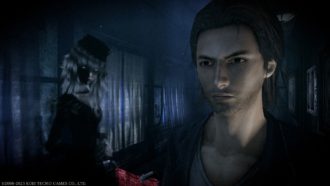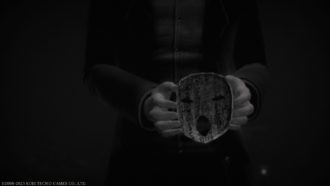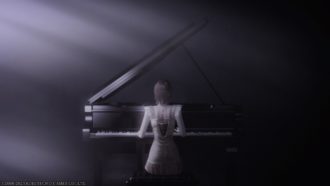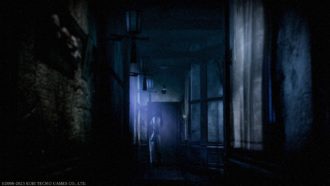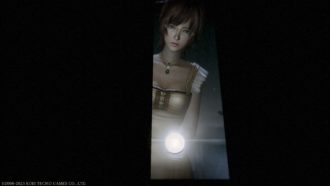Platforms:
Xbox One, PS4, PC, Nintendo Switch, PS5, Xbox Series X|S
Released:
March 9, 2023
Publisher:
Koei Tecmo
Developer:
Koei Tecmo
It always feels like an event when a game is finally localised and makes its way here to the West. That becomes even an bigger spectacle when it’s that of a beloved cult horror series. Project Zero: Mask of the Lunar Eclipse is here, fresh on current-gen consoles and playable outside of fan translations. On offer is an eerie time, filled with plenty of scares, Japanese folklore to immerse yourself in and picture-taking goodness. After spending some time in its haunted hallways, it’s as competent a journey as you’d expect. It’s a 2008 horror game from the Wii, remade. Warts and all.
A festival, rituals and many unanswered questions
Project Zero: Mask of the Lunar Eclipse takes place on Rogetsu Isle in Southern Japan. Ten years ago, five young girls disappeared from the Isle during a festival known as the Rogetsu Kagura. All were eventually rescued though their memories were lost and only flashes of the events remain. A piece of a melody. A dancing masked woman. That’s about it. Returning to the Isle are three of the five girls (the other two since died in mysterious circumstances), on the hunt for answers along with Choushiro Kirishma, an ex-detective that originally worked the case of the missing girls. Hundreds upon hundreds of ghosts, specters, apparitions and the like remain between the group and finally untangling the mystery.
Throughout twelve chapters, you’ll play as each of these girls and Kirishma, but the story soon opens up to be largely following the detective and Ruka Minazuki, the main individual of the bunch. One of the main facilities you’ll be exploring is a Sanatorium. The unnerving factor that comes with exploring the isle manages to hold throughout the ten or so hours I spent completing the game. The paint will be peeling off the walls. Voices from the undead will visit you through the building’s PA system and phone lines. All that mainly lights your way is a measly flashlight as you take slow, harrowingly slow, steps.
As you can imagine, with such a setting and visual motifs such as masks and ghosts you’re forever chasing, quite the narrative implications present themselves. Outside of combat, apparitions that once walked the isle amongst the living will be found walking down hallways, leading you to a location of interest. Alternatively, they’ll be positioned in such a way that these appearances can feel like memories, with flashes of horrible experiments and cruel mistreatment between the staff and patients. Whispers of dark goings on underground will occur. A condition known as ‘Moonlight Syndrome,’ too is brought up regularly, indicating something sinister with the isle’s inhabitants and their obsession with ritual, nature and the deceased.
Slowly, the group regain their memories and make sense of all the current and old events of Rogetsu Isles. There are surprising reveals in there that I genuinely didn’t see coming. Horror atmos is captured expertly between the modern era and flashes of the past. When twists and turns involving the past are occurring, they’re often edited with heavy film grain and distortion to add a horrific and found footage effect that’s dripping with dread. So much of the game is unbelievably visually interesting and well worth seeking out in every facet for your own eyes. Going into much more depth would be spoiling the delightful horror that awaits.
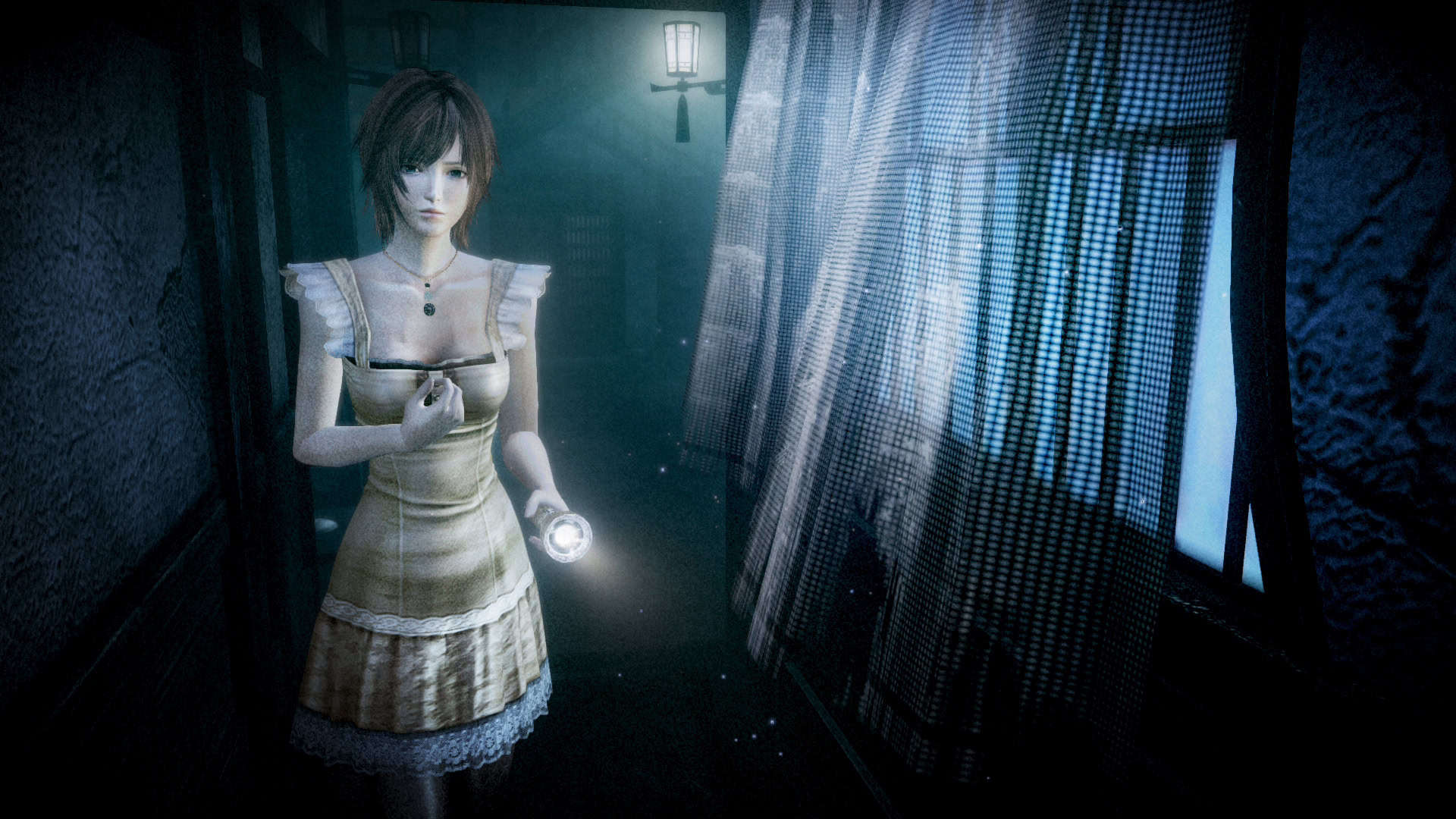
I found a wonderful horror story within Mask of the Lunar Eclipse, but like the prior (re)release of Maiden of Black Water in 2021, I was left picking up some of the pieces. The broad narrative strokes are clear as day. However, so many further intricacies are found only in readables. Left behind diaries, scrawled letters and notes from the deceased… a lot of the information you gather is through this means. Normally, this type of storytelling works best when it’s supplementary, but that isn’t always the case here. Occasionally a cutscene or two would play out which would then only make sense had I found the relevant (and at times missable) note minutes prior.
“…So much of the game is unbelievably visually interesting and well worth seeking out in every facet for your own eyes.”
I find this somewhat symptomatic of the period in which the game was originally released. No doubt limits in technology and even perhaps budget were what resulted in these choices. Still, I can’t help but feel like there were times the story didn’t always put its best foot forward. Intriguing insight and events are found within these texts that could’ve been so engaging to see in a cutscene.
Some of the text being buried in this way often comes across as the narrative team not always feeling confident in their own work. Which they should! Some of the strongest lore and story come from reading notes of the children’s perspective at the time, or logs between staff at the Sanatorium. I was all on board for the story in Mask of the Lunar Eclipse, I wanted it to usher and welcome me into its world better and more fluidly. Credit where credit’s due though, these readables are always a few small screens of text and not the egregious walls and paragraphs of an essay otherwise found in other games.
I’ve now played two games in the Project Zero series. Both feature this same heavy reliance on readables as a narrative device. If this sudden re-releasing and remaking of prior entries is emblematic of a proper series return, I hope it is. However, some more modernising will need to be done if a new entry is to come. I’m talking about a more fluid flow between lore and direct storytelling. More bold storytelling (that I can already see glimpses of!). While we’re at it, let’s scrap those returning skins that put teenagers in swimming suits.
Freeze frame
Project Zero: Mask of the Lunar Eclipse predictably features photography as a means of combat gameplay the series is known for. The characters’ Camera Obscura once more is used to keep the deceased at bay as they shamble and teleport to you. The longer you hold an enemy in focus before taking a picture, the more damage that enemy receives. Upgrades to your camera, attached lenses and the film reel type used with a shot also dictate damage but also reload time, easier locking on and more.
This gameplay loop remains thrilling throughout and Mask of the Lunar Eclipse even gets a little creative with the environments you’re put in during these encounters. Tight-knit corridors make for choke points where you can’t do much except back up and group foes as best you can. Wider arenas give you more breathing room, sure, but they take place in engaging spaces where enemies and obstacles you can get caught on are aplenty. On normal difficulty, the experience is never harsh and in fact balanced just right – you can mostly make your way through the game using the default and weaker reel that is unlimited in supply. However, boss encounters where the target is faster moving and more formidable will require quick thinking and stronger equipment.
Score is also the name of the game. The more creative and grouped up your shots will be the more points you’re rewarded with to spend on resources at the quasi-shop found at save points. Purchases on my end included healing items, a location guide for collectibles and more bonus accessories such as glasses or flowers to already captivating dress designs. These rewards are enticing and before long I felt expert in the way I would comb through a room, dodging about and quick-firing a ghost in the face to my heart’s content.

The Camera Obscura can also be used in other creative ways. Periodically, you’ll have to take an image of a wisp of light, revealing a secret. Mask of the Lunar Eclipse also happens to have its own index of ghosts that you can collect. As you explore the story there will be times when unique events or opportunities to capture ghosts appear. If you’re quick enough to get the shot, this adds to your compendium and completion rate for the game. One may think it’s a bit tonally jarring to also be going on a Pokémon Snap-style escapade in the midst of dreadful horrors. I find it delightful and enjoyed collecting shots of all the weirdos found throughout the Isle.
I found a nice design touch in the fact that the detective Choushiro Kirishma isn’t carrying around a Camera Obscura at all, but just a flashlight. Not only does this make more sense for him to be lugging around but it’s a fun skin to a known weapon. You can use this in more or less the same means as the Obscura, releasing the capture button when the focus of light is at its brightest to damage enemies. You can even attach a lens that makes you take photos of points of interest, further blurring the lines of the two weapons in-game and serving more as a quirk. Furthermore, it’s novel in retrospect to see a 2008 game use a flashlight and light source as a weapon before Alan Wake was released back in 2010.
Remaking a game many have yet to experience
Project Zero: Mask of the Lunar Eclipse is in a weird boat of a remake where many people don’t have the original at hand to compare to. Never having been released outside of Japan and only being on the Wii, the very nature of the title makes it a remake. Having researched some of the footage of the original, the visual upgrades are noticeable and very welcome. Lighting is one of the big strengths, now capturing characters and the environment in a haunting and enchanting blue from the moonlight that spills from windows.
Characters benefit from the higher resolution, appearing more one-to-one with the pre-rendered cutscenes. At times, especially in the female cast, this can leave the characters looking almost doll-like. I actually like this feeling and look. Wandering through the halls of the Sanitorium, seeing the cast in an authentic dress that moves, ruffles and creases against their frames… it felt like I was directing models and toys through a wicked play set. Those bone-chilling vibes remain throughout especially when there’s the randomised chance of a ghostly arm grabbing you whenever you reach out to pick an object. A scare always cleverly waiting in the wings and thus never leaving players at ease.
Already a stylistic game in its own right the improvements in visual fidelity in the game space has aided in crafting a more believable and horrific Rogetsu Isle. That being said, it still can at times play and feel like a game from the mid-2000s. The constant and very analogue moving and strafing around rooms left to right and back and forth won’t be for all. I revel in it and love finding ways of making those controls work for me but I’m not unaware of that fact. What is undeniably more finicky is the movement of the flashlight and, in turn, the camera. In a given room you’ll have to unearth items and readables by scanning over them with your light, revealing a shiny interaction point for you to engage with.
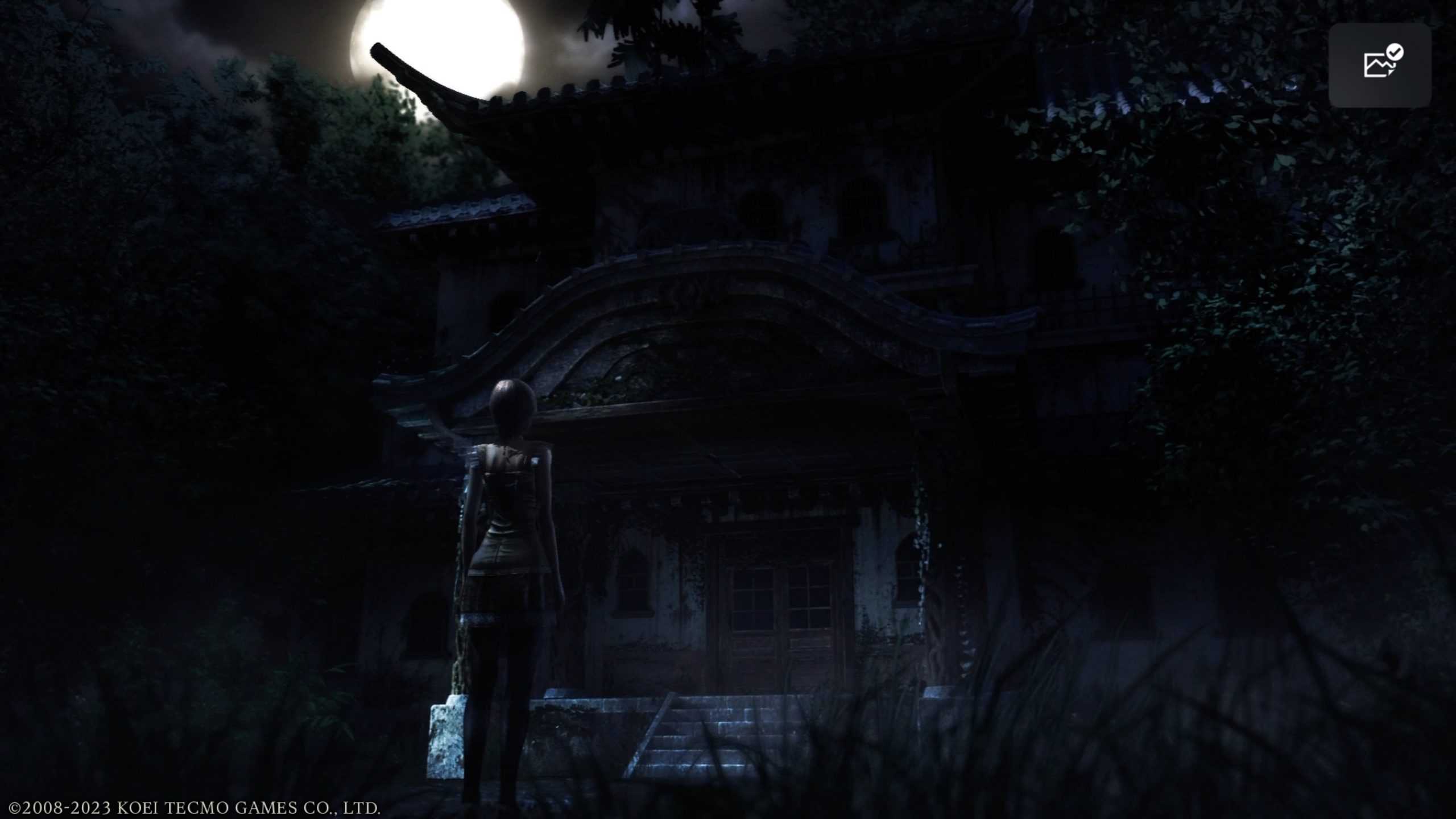
While a great idea to encourage the player to comb through every fine bit of an environment, it’s a bit of a mixed bag in getting this to work. The input is slow and not all that responsive, resulting in instances where I was resigned to moving on after trying for a moment or two. This can be all the more frustrating because players know there’s an object to find somewhere; every time you’re near something of the sort, a HUD popup will appear and glow, indicating proximity.
Project Zero: Mask of the Lunar Eclipse is by no means a phoned-in remake and I’m glad it exists. Even with parts where the game still shows its age under that new coat of paint, I had a wonderful time throughout. Finally, a cult-classic horror adventure long discussed is finally more realised and playable for all. Let that trend continue. Resurface more classics, I say.
7.5
Good
Positive:
- Atmospheric horror done right
- Engaging in combat through means of taking on the fly pictures is tense fun
- Plenty of worthwhile rewards for completionists
- Wonderful narrative...
Negative:
- Though narrative can often rely too much on readables
- Camerawork can be a bit fiddly when manipulating regular flashlight
- Once again needless and troubling skins of teenagers in swimsuits
Project Zero: Mask of the Lunar Eclipse is a good remake. It paints an engaging and delightfully horrific world to delve into, with shocking twists and secrets to uncover at every turn. While players will very likely be left picking up the pieces of its narrative largely told through readables, it’s rewarding when it all clicks into place, painting a harrowing picture set in Southern Japan. It may be a remake that is still very of its era, with finicky camera movement and some questionable female character skins that can only come from that of gaming in the 2000s. However, in every other aspect, Mask of the Lunar Eclipse revels in its origins. On offer is wicked, tense and tight combat performed creatively through the Camera Obscura. It’s environmental design and scares are begging to be picked apart in true throwback fashion. Well worth the resurfacing indeed.
